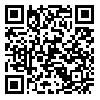BibTeX | RIS | EndNote | Medlars | ProCite | Reference Manager | RefWorks
Send citation to:
URL: http://rehabilitationj.uswr.ac.ir/article-1-8-en.html
Objective: Handedness is the most prominent behavioral asymmetry in human. The term of hand preference points to prefer hand or functional asymmetry in manual tasks. The items were considered in this study were: the comparison of handedness between normal and congenitally deaf students the effects of age, sex, and pressure on using right hand for unimanual tasks on handedness the frequency of left-handers among student’s families, the influence of hand preference on English language capabilities, and the point of view of people rather to left-handers have been investigated.
Materials & Methods: This cross-sectional comparative study was conducted on 760 students including 380 normal students and 380 deaf students with congenital severe or profound sensory-neural hearing loss from 12 to 18 years of age by that were selected purposefully, completing Edinburg handedness inventory in Tehran. The students didn’t have any confirmed diseases or neurological disorders, except hearing loss in deaf student. Data were gathered through the completion of the Edinburg Handedness Inventory by the students. The student’s aural records and also the confirmation of the audiologist in the deaf schools were considered in order to determine the kind and degree of hearing loss.
Results: The prevalence of left-handedness among normal (9.7%) and deaf (10.3%) students were near to each other, and there was no significant difference between them (P=0.901, z=-1.24). The prevalence of left-handedness was higher in boys rather than girls, but there was no significant influence of sex and age on results (P>0.05). The family and/or teacher pressure for using right hand was 16.0% in normal students and 5.0% in deaf students, and they didn’t report any strict pressure or severity regard this mater. The frequency of left-handers was higher among family of normal students (22.6%) than deaf students (13.2%), and the difference between them was significant statistically (P=0.003, Z=-2.976). In both normal and deaf students, there was no significant difference between left and right-handers relate to English language ability (P>0.05). Regarding point of view people relate to left-handers, there was no significant difference between normal and deaf students (P=0.541, Z=-0.611).
Conclusion: In present study, the prevalence of left-handedness was near to it’s prevalence in North-America and Western Europe, and revealed considerable difference with statistics of some Asian countries. The sameness of left-handedness prevalence in normal and deaf students, didn’t confirm the Previc’s hypothesis regard no differential ear sensitivity or advantage in congenitally deaf persons.
Received: 21/07/2007 | Accepted: 11/10/2015 | Published: 11/10/2015
| Rights and permissions | |
 |
This work is licensed under a Creative Commons Attribution-NonCommercial 4.0 International License. |





